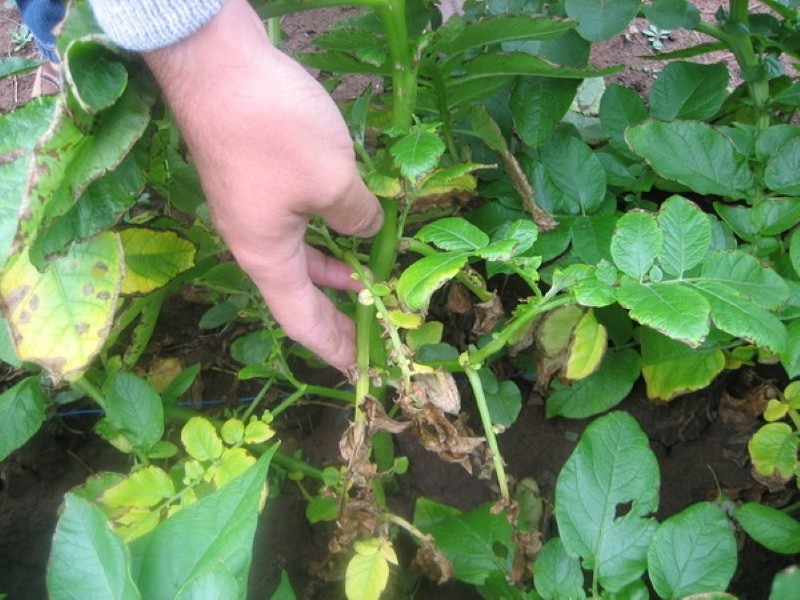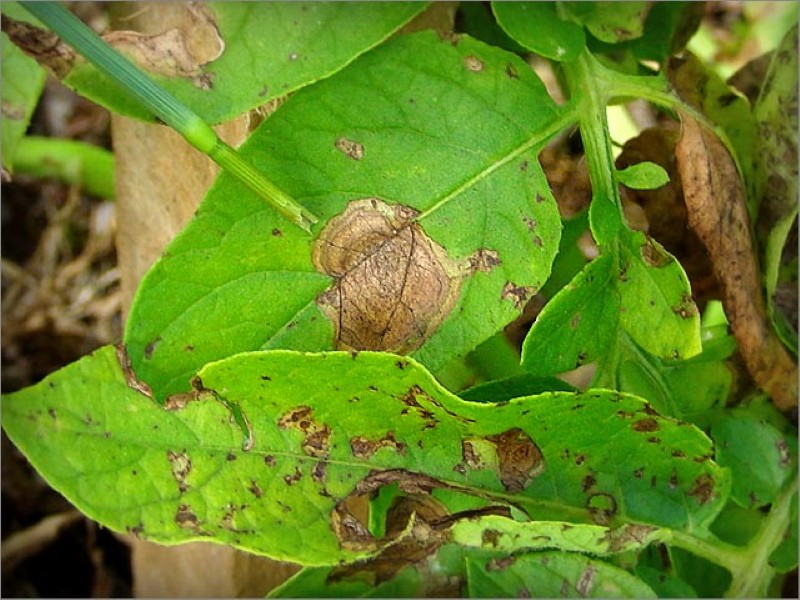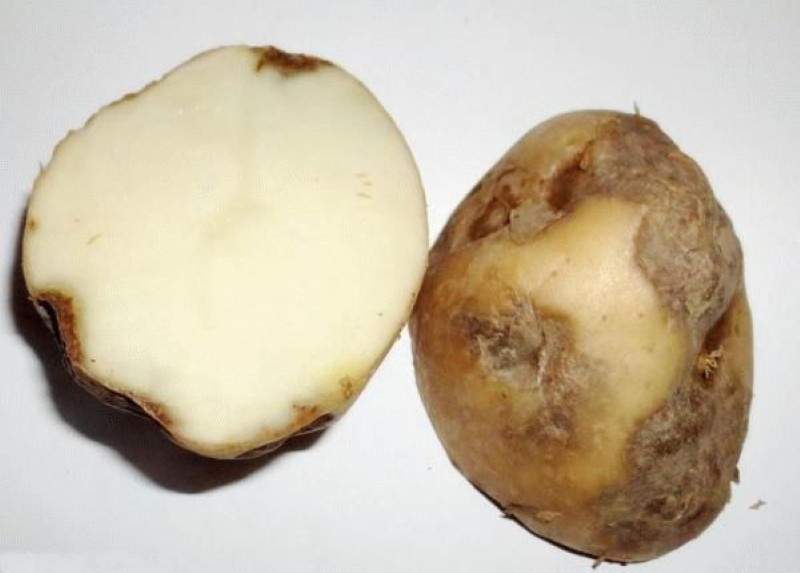How is the disease of hot summer manifested and how is it treated - alternariosis of potatoes
 Cool rain after a hot summer day brings relief. But if the rains alternate with heat, then this can become a problem for gardeners. In such conditions, a dangerous disease manifests itself and begins to actively develop - potato alternaria. It infects leaves, depriving plants of nutrients, which can reduce yields by more than 50%. Sick bushes form fewer tubers or they grow underdeveloped. But that's not all - the mycelium hibernates well in the affected tubers. And during the entire storage period, it continues to destroy them. Potatoes are poorly stored, spoil, and the one that still manages to stay until spring becomes a source of infection for new plantings. That is why it is important to timely identify the disease and take action.
Cool rain after a hot summer day brings relief. But if the rains alternate with heat, then this can become a problem for gardeners. In such conditions, a dangerous disease manifests itself and begins to actively develop - potato alternaria. It infects leaves, depriving plants of nutrients, which can reduce yields by more than 50%. Sick bushes form fewer tubers or they grow underdeveloped. But that's not all - the mycelium hibernates well in the affected tubers. And during the entire storage period, it continues to destroy them. Potatoes are poorly stored, spoil, and the one that still manages to stay until spring becomes a source of infection for new plantings. That is why it is important to timely identify the disease and take action.
Potato Alternaria - signs of the disease and stages of its development

Alternaria is most pronounced on light and stony soils. Plants that lack potassium are also more vulnerable to disease.

Symptoms of Alternaria:
- Spots begin to appear on young plants in wet weather. They are randomly located, dry, dark, with an uneven concentric surface.
- After 4-5 days, the overgrown spots dry out, crumble, and form conidia.
- Gradually, severely affected leaves turn yellow.
- Plants tie few tubers, and those that exist are affected by the fungus. Impressed dark spots form on their surface. The tissues in these places become hard, almost black and rot, as if affected by dry rot.
How to treat alternaria
 If plants are affected by fungi, you should start treatment at the first sign, as soon as you find dry spots. To do this, spray the potato beds with a fungicide. Ridomil Gold or Revus. Usually after the second treatment, the disease can be stopped.
If plants are affected by fungi, you should start treatment at the first sign, as soon as you find dry spots. To do this, spray the potato beds with a fungicide. Ridomil Gold or Revus. Usually after the second treatment, the disease can be stopped.
But do not forget that tubers are most responsive to the fungus. Therefore, before storing them for storage, carefully sort your crop in order to select the affected potatoes. It will be best seen if, before that, you heat the vegetables at a temperature not lower than 14 ° C heat for two weeks. Sorted out the same potatoes before sending them to the cellar for storage, treat with the preparation Maxim. Spray the tubers with the same fungicide in the spring, before planting.
To prevent the appearance of Alternaria, observe the crop rotation. Do not plant potatoes after other nightshade crops. Try to choose a flat area where moisture will not stagnate.Use only healthy planting material and preferably varieties that are resistant to Alternaria.